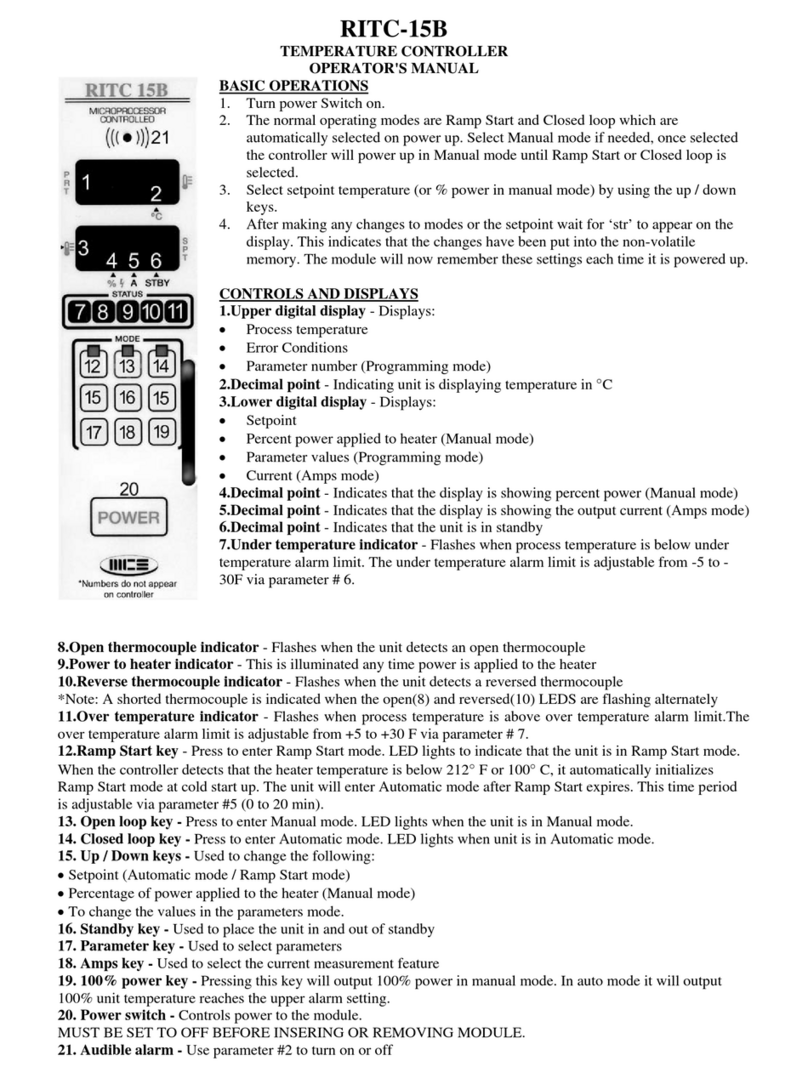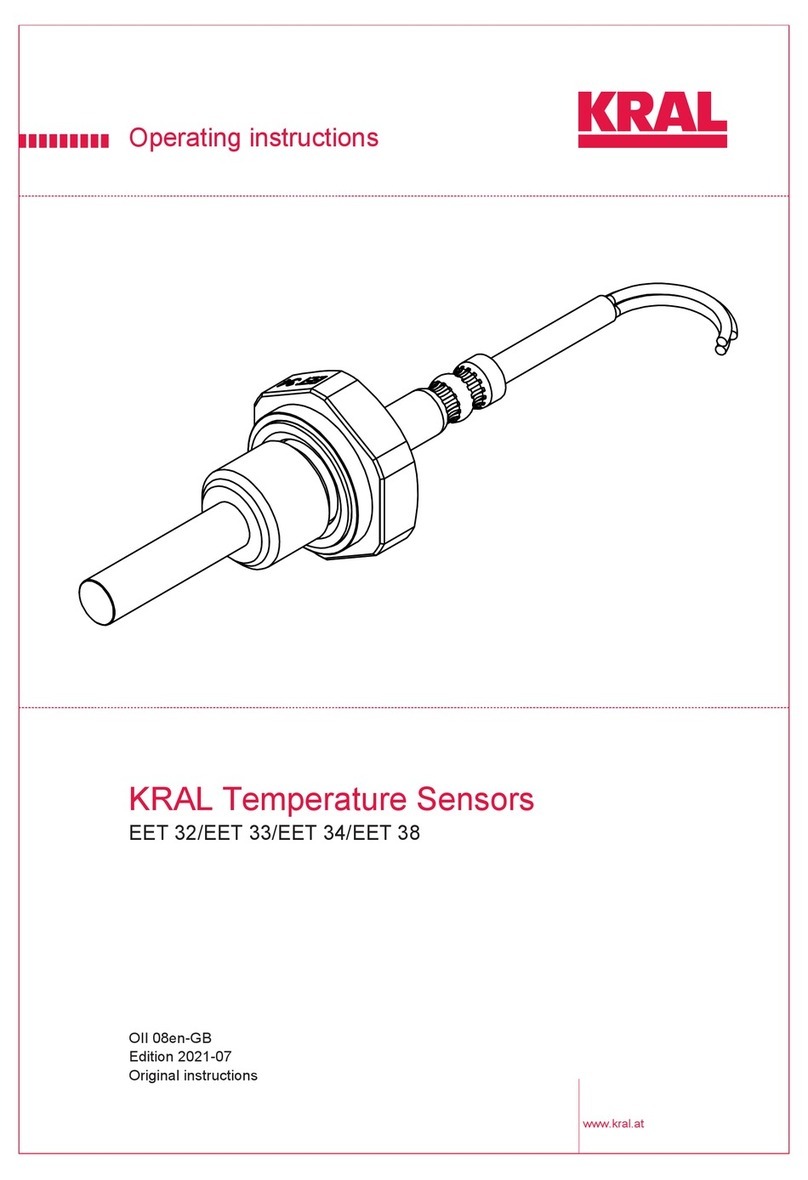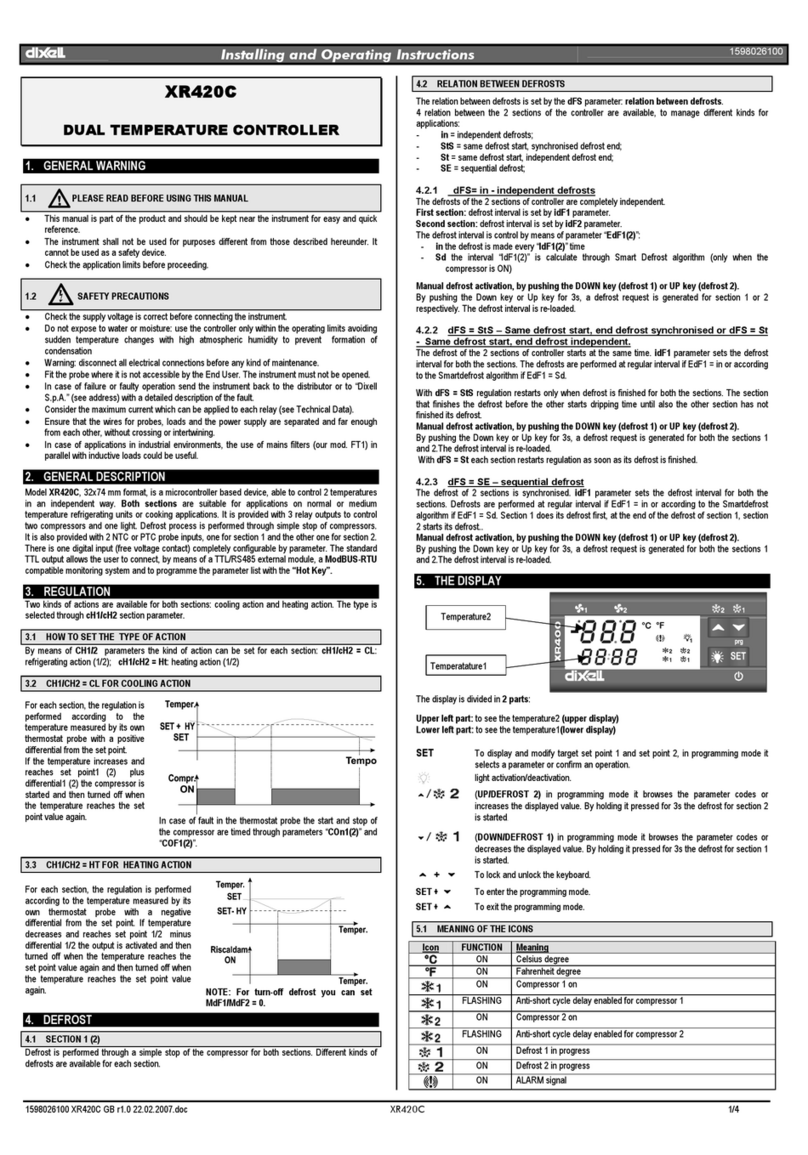TPIR-J • TPIR-K
9
Emissivity
Emissivity is the ability of an object to emit infrared energy from its surface. Most objects or
surfaces have an emissivity value of about 0.95. This is the pre-set emissivity value of the
TPIR-J and TPIR-K.
Some objects, such as polished or shiny metallic surfaces, may have much lower emissivity.
Using an infrared temperature sensor to measure the temperature of such objects will produce
inaccurate results.
To determine the affect of emissivity on the measurement, cover the surface with masking tape
or flat black paint. (Be sure to use tape or paint that can withstand the anticipated tempera-
ture.) The emissivity of both these materials is about 0.95. Allow time for the tape or paint to
reach the temperature of the material underneath. Measure the covered area and a nearby
area. The readings should be about the same.
If they are not, the emissivity may affect your measurements.
Measurement Considerations
• If the surface to be measured is small [13 mm (1/2") or less], hold the probe as close as
possible to the surface [no more than 50 mm (2") away].
• If the surface to be measured is covered by frost or other material, clean it to expose the
surface.
• If the probe seems to be giving incorrect readings, check the front of the probe. Carefully
remove any condensation or debris from the sensor using cotton swabs dampened with
water or water-based glass cleaner. Do not use solvents! Allow sensor to air dry before use.
Temperature readings will be inaccurate on highly reflective objects; follow masking
procedures.
Failure to observe this precaution can result in injury or property damage.



























